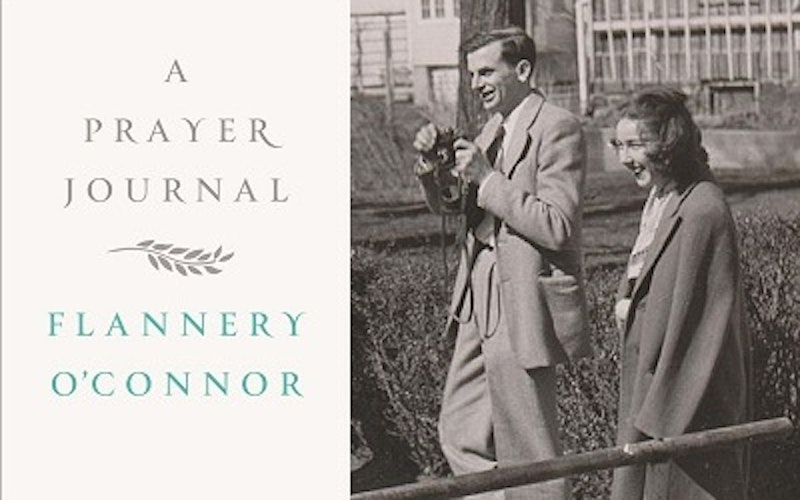
Culture At Large
Reading between the lines of Flannery O'Connor's prayer journal
The prayer journal of Southern Catholic writer Flannery O’Connor was released a little over a week ago and already the buzz abounds. Friends, colleagues and writers I admire are talking excitedly about having this slim book in their hands. Renowned author Marilynne Robinson has even pondered it for The New York Times in her precise, elegant prose.
While I have enjoyed the hype, it made writing about the book more daunting. I was gripped by insecurity, wondering if there was anything worthwhile left to say.
It turns out that the 20-year-old O’Connor who kept this journal was well-acquainted with anxiety and doubt over her craft. Yet she kept writing, anyway. Angst-ridden as she was, she still believed she had words worth saying - in this case, to her God.
“Dear God, I cannot love Thee the way I want to,” she says on the first salvaged page of the journal.
Much of the collection is a detailed outpouring of this fear. O’Connor tells God what worries and shames her. Mostly she is afraid that her own preoccupations and limitations - her “self shadow” - will prevent her from seeing and adoring Him as she ought. Her language for herself is harsh; she calls herself stupid, lazy and “a presumptuous fool.”
O’Connor also shares her delights and joys, which are centered on her work as a fiction writer. Even at her young age she is rapturously devoted to her craft and holds it up against the loneliness invading her soul. Again and again she acknowledges God as the source of her work, thanking Him for giving her stories that allow her to be “the instrument for [His] story.” “I want to be the best artist it is possible for me to be, under God,” she says.
Her reflections on burdens and triumphs are pleadings for God’s mercy and “necessary grace.”
Her journal reveals the universal tensions that cause all of us to cry out for grace and mercy.
Some may read her abrupt last entry as an expression of defeat or surrendered faith. “My thoughts are so far away from God,” it begins. The last line reads: “There is nothing left to say of me.”
Although O’ Connor’s published prayers end here, we know that she did not stop talking to or thinking of God. I believe her desire to “write a beautiful prayer” led her to write fictional works of bloody resurrection, where characters' selfish preoccupations and vanities are urgently burned away into gestures of mercy and holy clarity.
O’Connor persisted in saying what God had uniquely gifted her to say. As the preface notes, even the debilitating agony of lupus did not silence her. In fact, her last years were her most prolific.
As I contemplated O’Connor’s life, the words of another sufferer rose to my mind. I recalled the hymn “For Your Gift of God the Spirit” by Margaret Clarkson, who was also plagued by the pain and isolation of chronic disease. The hymn’s third verse says:
He, himself the living Author,
wakes to life the sacred Word,
reads with us its holy pages
and reveals our risen Lord.
He it is who works within us,
teaching rebel hearts to pray,
he whose holy intercessions
rise for us both night and day.
O’Connor’s prayers are also addressing the living Author. He knew her beyond the page and heard her silent, never-ending intercessions - her unpublished prayers. This is how fully He knows every one of us.
Flannery O’Connor had less than 40 years on this earth and still, even now, God is “writing” her story into new readers. Her prayer journal is a testament to her unique brilliance, but it also reveals the universal tensions that cause all of us to cry out for grace and mercy - in public works and in private supplications. We can read it to be reminded that our works breathe beyond the grave, and to ponder afresh how our “Dear God” is writing His startling redemption story into us all.
Topics: Culture At Large, Arts & Leisure, Books, Theology & The Church, Prayer